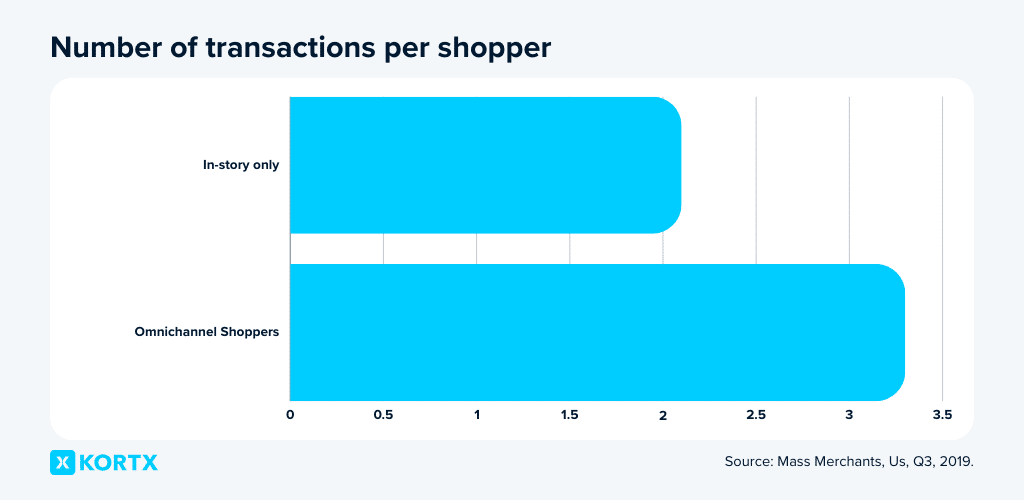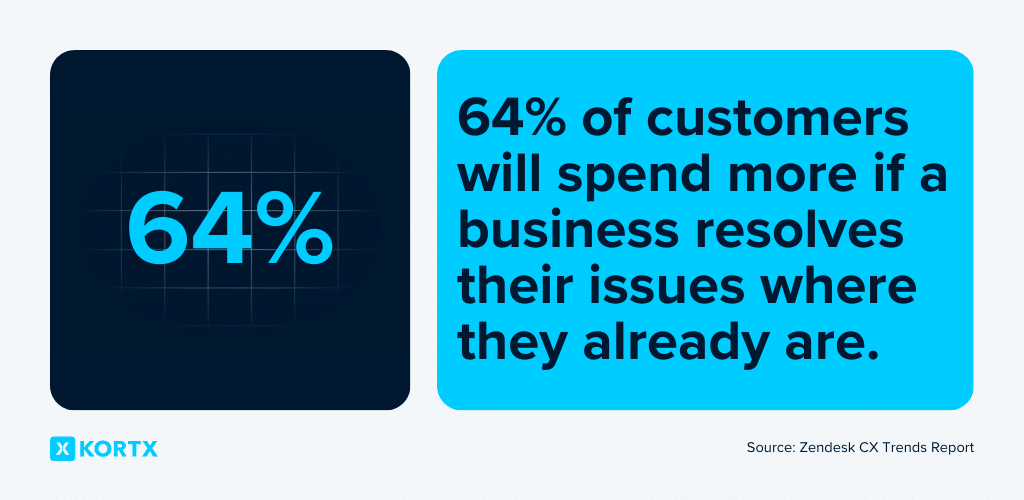Omnichannel retailing provides a unified brand experience across all marketing channels. Businesses with a strong omnichannel retail strategy generate 80% of in-store customer visits.
Also, as many as 74% of customers conduct online research before physically visiting a store. Therefore, it’s important for businesses to engage shoppers across all touchpoints to meet them wherever they are.
Discover the main benefits of an omnichannel retailing strategy and why your business should have one today.
Omnichannel Definition
Omnichannel retail is a multi-channel sales approach that provides customers with an integrated shopping experience, combining services and interactions across physical stores, online platforms, and mobile applications.
📚 Find out more in our article Omnichannel Retailing: How to Meet Your Customers’ Needs.
What Are the Benefits of Omnichannel Retailing?
Integrating omnichannel retail into your business operations offers the opportunity to improve the overall customer experience and engage with shoppers across various platforms.
This section reviews the additional benefits of developing an omnichannel retail strategy for both retailers and consumers.
1. Omnichannel Improves the Customer Experience
Today’s customers jump from channel to channel across the purchasing journey and expect a consistent experience. Salesforce found that 79% of customers expect consistent interactions across a company’s departments, and 80% say the experience a company provides is as important as its products or services.
Omnichannel retail caters to this expectation by unifying the experience. Customers receive the same level of service, pricing, and product availability no matter how they interact with a brand.
What is a major benefit of omnichannel retail?
“Omnichannel retail also enables businesses to gather and leverage comprehensive data from these interactions for better decision-making and personalized marketing. Ultimately, this approach leads to higher engagement and sales, as it resonates deeply with individual customer needs and shopping habits.”
2. Customers Spend More
The Harvard Business Review (HBR) found that omnichannel shoppers spend an average of 4% more every time they shop in-store and 10% more when shopping online compared to those interacting on only one channel.
Even more, with every additional channel used, shoppers spent more in-store. Customers who used 4+ of a brand’s shopping channels spent an average of 9% more in the store.
If a customer conducted prior online research on a retailer’s or related site, this led to 13% greater in-store spending among omnichannel shoppers.
Shoppers are no longer showrooming first. Showrooming is when shoppers conduct their research in the store and then buy online. Instead, HBR found the opposite true, especially among Millennial and Gen Z shoppers, researching online and then buying in-store or “webrooming.”
🛒💻 “The Amazon Effect”
84% of shoppers check Amazon before shopping elsewhere.
3. Customers Are More Loyal
The same HBR study found that omnichannel shoppers are more likely to return. Customers who engaged with companies on multiple channels visited a physical store 23% more often over a 6-month period.
They were also more likely to recommend the brand to friends and family than those who used a single channel.
Criteo found that in-store-only shoppers made 2.1 purchases on average compared to 3.34 purchases for omnichannel shoppers. Also, 63% of omnichannel shoppers made two or more purchases versus 44% of in-store-only shoppers.

4. Omnichannel Makes Shopping More Accessible
According to Zendesk, 64% of customers will spend more at a company if their issues are resolved on the channel they already use.
Providing shopping flexibility means offering multiple shopping channels and various shipping and delivery options. By doing this, your business can meet customers on their preferred platforms.

Whether buying online and picking up in-store, browsing in physical stores and ordering through an app, or getting customer support via social media, omnichannel retail offers a convenient and accessible shopping experience.
From Clicks to Bricks: Omnichannel Retailing
Omnichannel retailing is not just an emerging trend but a fundamental shift in the retail landscape. As statistics reveal, customers engaging with omnichannel retail spend more, exhibit higher loyalty, and are more likely to advocate for the brand. Therefore, adopting an omnichannel strategy is not just a competitive edge—it’s necessary to meet the evolving demands of the modern consumer and ensure your business’s sustained growth and success.
Customers may spend >18% for an omnichannel experience. How’s your strategy?
Evaluate your strategy with our expert team and see how you can enhance your omnichannel approach & meet customer expectations.
About the Author
Erik Stubenvoll is a Managing Director at KORTX with over 20 years of experience. When he is not learning about his client’s goals, he is on the sidelines with his wife at his daughter’s softball and soccer games or on the golf course.

